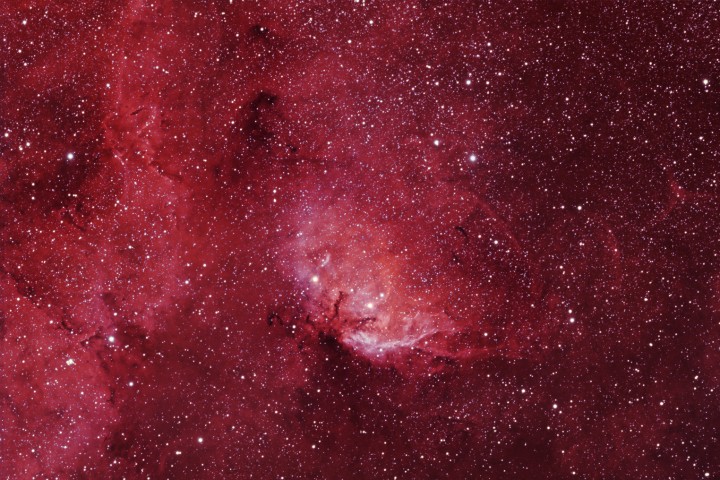Credit & Copyright: Neil Fleming
Explanation:
This expansive (1-degree wide)
telescopic
view looks out along the
plane of our Milky Way Galaxy toward the
nebula rich constellation
Cygnus
the Swan.
It is centered on a bright hydrogen emission region
recorded in the
1959 catalog
by astronomer Stewart Sharpless
as Sh2-101.
About 8,000 light-years distant the nebula is popularly known
as the Tulip Nebula, understandably not the only
cosmic cloud to evoke the imagery
of flowers.
Complex and beautiful in visible light, the area also includes
one of the brightest, most famous sources in the
x-ray
sky, Cygnus X-1.
Discovered in the early 1970s,
Cygnus
X-1 is a bizarre
binary system consisting of a massive, hot, supergiant star
(seen here)
in close orbit with a stellar mass
black hole.
The Cygnus
X-1 system is also estimated to lie a
comfortable
8,000 light-years away.
1999 2000 2001 2002 2003 2004 2005 2006 2007 2008 2009 2010 2011 2012 2013 2014 2015 2016 2017 2018 2019 2020 2021 2022 2023 2024 2025 |
Январь Февраль Март Апрель Май Июнь Июль Август Сентябрь Октябрь Ноябрь Декабрь |
NASA Web Site Statements, Warnings, and Disclaimers
NASA Official: Jay Norris. Specific rights apply.
A service of: LHEA at NASA / GSFC
& Michigan Tech. U.
|
Публикации с ключевыми словами:
emission nebula - Cyg X-1 - Cygnus - эмиссионная туманность - Лебедь - Лебедь X-1
Публикации со словами: emission nebula - Cyg X-1 - Cygnus - эмиссионная туманность - Лебедь - Лебедь X-1 | |
См. также:
Все публикации на ту же тему >> | |
